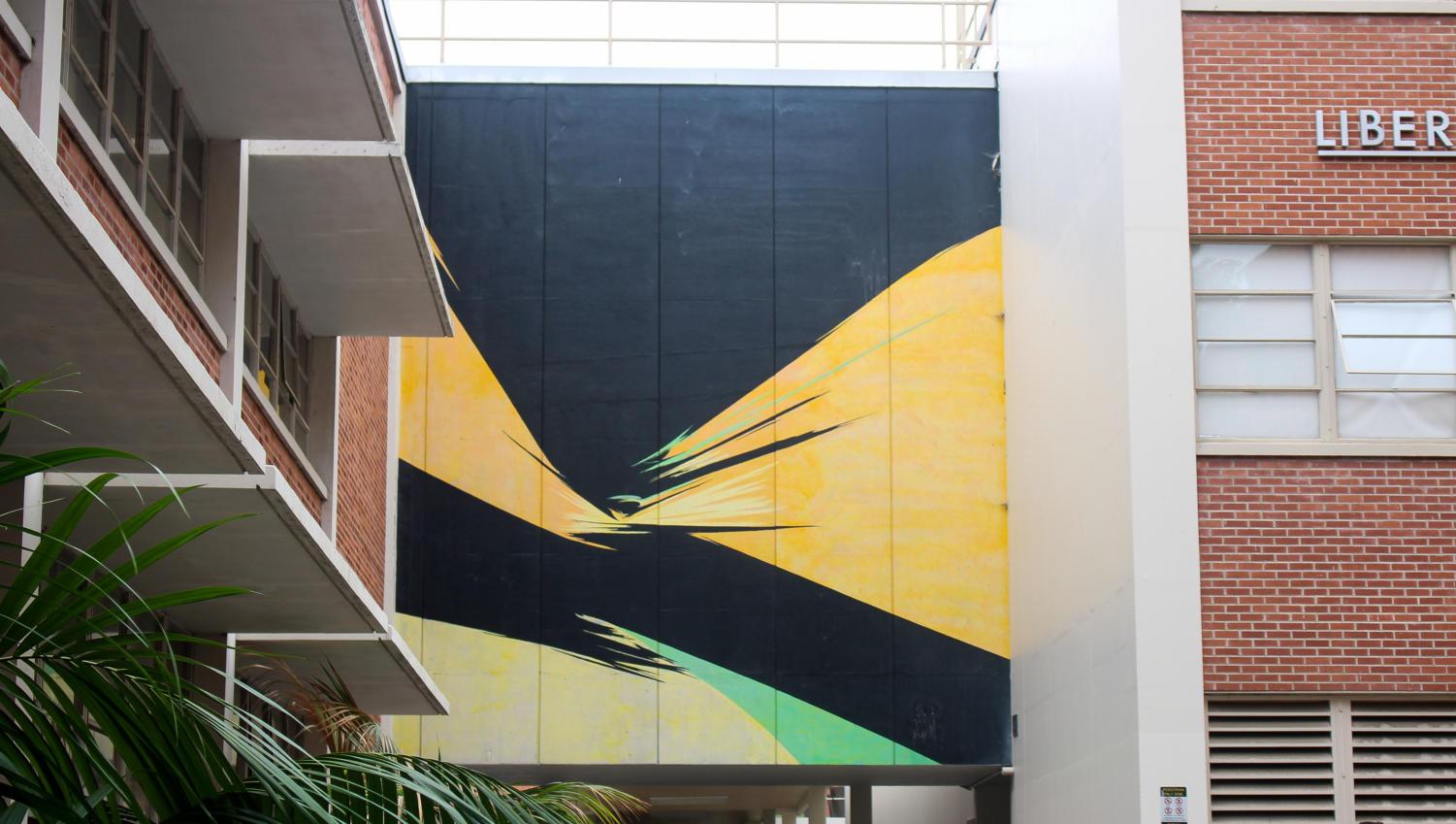For the past 50 years, students have mindlessly passed underneath a certain abstract mural that will finally receive a touch-up next year thanks to a grant from the Long Beach Navy Memorial Heritage Association
“Sun Forces” by Rita Letendre, the 22 feet by 21 feet landmark mural between Liberal Arts 5 and Faculty Office 3, is getting a restorative makeover summer 2019.
Paint samples of the mural were taken on Aug. 13, and are currently under analysis by the Getty Conservation Institute. Once this is completed, phase two, the physical treatment, will commence in the summer of 2019.
The University Art Museum is responsible for the UAM Conservation Initiative under which “Sun Forces” is being restored. The mural is the eighth artwork on campus to be restored under this initiative, according to UAM public affairs and communications specialist Amanda Fruta.
The restoration is a collaborative effort between the Getty Conservation Institute and Rosa Lowinger & Associates, a bicoastal conservation firm based in Miami and Los Angeles, who was contracted to undertake the restoration of the mural.
“In general, [conservation is about] educating people about what these pieces are and their relevance,” Christina Varvi, senior conservator at Rosa Lowinger & Associates, said. “Not just in their community, but in the greater art world.”
The mural is a remnant of the first ever International Sculpture Symposium in the United States, which took place on the Long Beach State campus in 1965.
“[It was] a great meeting of the minds,” Maria Coltharp, registrar and curator of the permanent collection at Long Beach State, said. “Artists from all over the world came here to create artwork and to share this campus. A lot of the big artworks you see around campus are from that 1965 symposium.”
A campus-wide survey was conducted by Rosa Lowinger & Associates in the fall of 2011, for the purpose of providing condition assessments of each of the artworks on campus, Varvi said. With this information, the campus was able to prioritize which grants to pursue based on conservation need. While examining the piece, Varvi found that the entire mural was covered in a clear protective coating, similar to a varnish.
“We have to determine whether or not that has to come off,” Varvi said. “We don’t want to inadvertently remove the actual paint underneath it.”
Restoration of the mural will not involve a full repainting of the work. In order to maintain Letendre’s original markings, such as brush strokes and subtle differences in color, the Getty Conservation Institute took samples of each color on the mural to determine the paint’s coatings, binding materials, and pigments.
“[Removing the coating] would be pretty time consuming, because you’re talking about using solvents and chemicals and liquids, things that are a little harder to control,” Varvi said. “[We] have to be really vigilant and know what [we] have before starting, so [we] can pick the right materials.”
Varvi described the evaluation process as “paint archeology.” Much like a “detective job,” Varvi and the UAM team must research the history of the mural to ascertain whether there have been undocumented restorations on the mural.
“They have documentation of some student riots a couple decades ago, in which paint bombs were thrown at the mural,” Varvi said. “Rita herself came back and did touch-ups.”
Undocumented maintenance poses a challenge for restoration efforts, but the Getty Conservation Institute’s specimen analysis will help ease the strain.
“They’re doing the scientific analysis because they have all that instrumentation in-house,” Varvi said. “They’ll run a battery of tests on them.”
It will be a few more months until Varvi receives the scientific reports from the Getty Institute, which will inform them on how to go about the final restoration.
Restorations that have been completed under the UAM conservation effort include Robert Murray’s “Duet (Homage to David Smith),” JJ Beljon’s “Homage to Simon Rodia,” and Robert Irwin’s “Window Wall,” among others.
“These pieces are shared history,” Coltharp said. “It’s amazing that this history played out here on our campus, that mid-century artists traveled here from all over the world and created these wonderful sculptures for us.”




